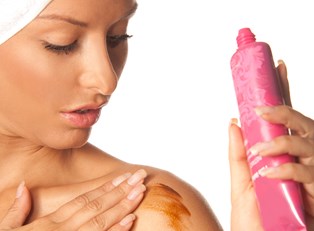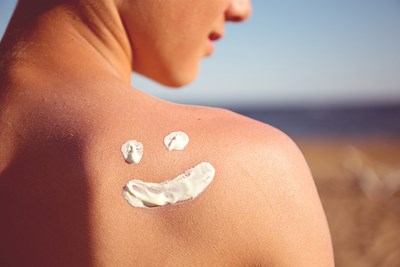You were trying to get beautiful, golden-bronzed skin in preparation for an exciting summer full of parties, picnics, and weddings. Instead, you got a bright red, painful sunburn. You are not alone.
A Widespread Occurrence
Approximately 35% of adults experienced a sunburn in 2014, and more than 50% of high school students experienced a sunburn. Of those high school students, it is not surprising that almost 60% were female and 52% were male.
Most people are aware that sunburns are not healthy for skin and increase the risk of skin cancer. But American culture has had firmly established tanning practices since the 1980s, which has led people to push their limits when it comes to sun exposure. There is a fine line between a tan and a burn. It’s one thing to know sunscreen should be reapplied every two hours, but actually doing it is another.
Erythema, or sunburn, is caused by overexposure to ultraviolet radiation (UVB) and can come from direct sunlight or tanning beds. The result is an inflammatory response with skin showing symptoms of redness, tenderness, warmth, and edema. Severe sunburns can produce blisters.
Finding Relief
Here are some tips on getting relief from painful sunburns:
- Cool Skin Down
Take a cold shower or bath or a quick dip in a pool or lake, (if it’s in the shade) to help relieve pain. Leave some water on your skin and apply moisturizer to trap water in your skin and ease dryness. Cold compresses can also help cool the skin. - Keep Skin Moist
Aloe vera and soy skin care products moisturize burned, dry, and peeling skin. Try putting the moisturizer in a refrigerator or cooler; it will feel good on the hot, sunburned skin. Be careful not to use oil-based or petroleum products, as they keep heat in rather than cooling skin. Products such as benzocaine should not be used on sunburns as it can irritate the skin. - Relieve Pain and Swelling
Nonsteroidal anti-inflammatory medications such as ibuprofen or naproxen can be given to decrease swelling and pain. - Hydrate
Drink extra fluids to replace those that are drawn to the surface of the skin and prevent dehydration. - Cover Up
Stay in the shade or if you need to be outdoors, wear wide-brimmed hats, light-weight long-sleeved shirts or pants, and sunglasses with UV protection.
We may know the risks and long-term effects on our skin, but sometimes we stay out in the sun too long. It is not worth trading the temporary glow of a deep tan for the wrinkles, cracked skin, and cancer risk down the road. Take steps to minimize long-term damage to your skin by taking appropriate precautions.
Jean Cherry, RN, MBA, is a former home health nurse who also writes about healthy living for Walgreens. You can browse a range of products to protect your skin, including sunscreen and moisturizer, at Walgreens.com.
Although it is intended to be accurate, neither Walgreen Co., its subsidiaries or affiliates, nor any other party assumes for loss or damage due to reliance on this material. Walgreens does not recommend or endorse any specific tests, physicians, products, procedures, opinions, or other information that may be mentioned in the article. Reliance on any information provided by this article is solely at your own risk.



